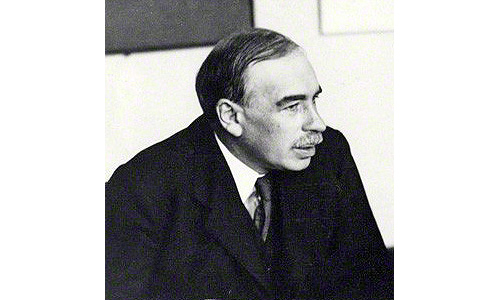
Keynesian economics
Lord John Maynard Keynes (1883-1946) was born in Cambridge, where his father taught economics at the University. An extremely bright and self-assured child, he went to Eton before attending Cambridge University as a student. After one economics exam in which, for a change, he did not gain top marks, he maintained that it showed he knew more than the examiner!
With a career in finance, the gifted but restless Keynes started to publish books and essays setting out his ideas. He produced ‘The General Theory of Employment, Interest and Money’ in 1936 in the midst of the Great Depression. It argued against the free market hands-off policy that allowed cycles of boom and bust. Instead, Keynes advocated proactive government intervention ~ borrow, lower taxes and interest rates and spend in a recession, and do the opposite once the economy has recovered.
This became known as Keynesian economics and for forty years it helped governments across the world to steady and gradually improve their nations’ economies. Keynes was against fat-cat salaries, speculating to over-accumulate and hoarding money away, as this does not help the cycle that connects spending to earning for the whole population. His ideas saw a resurgence in the financial collapse of 2008.
(Image from 1933: Wikimedia Commons / Public domain)
